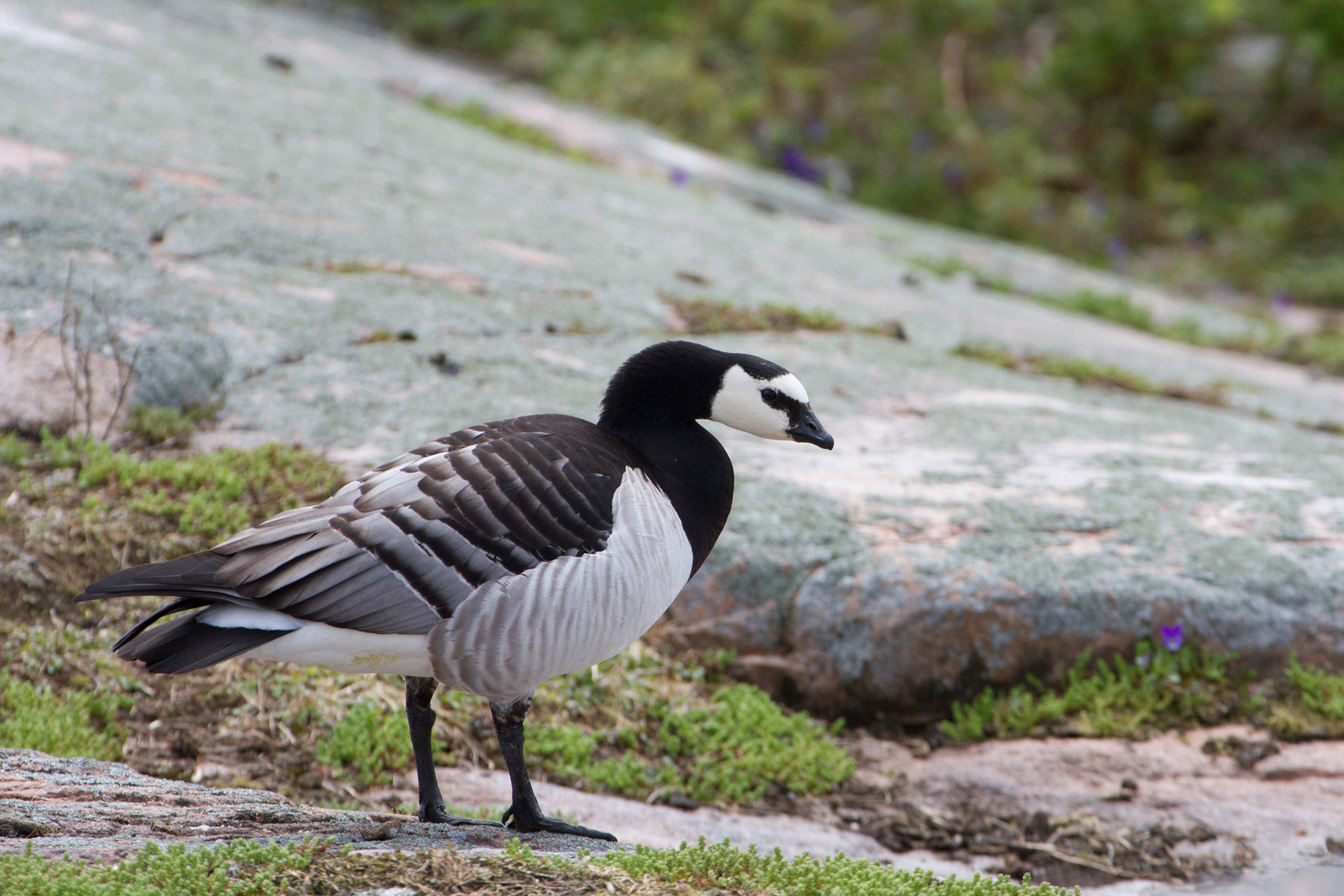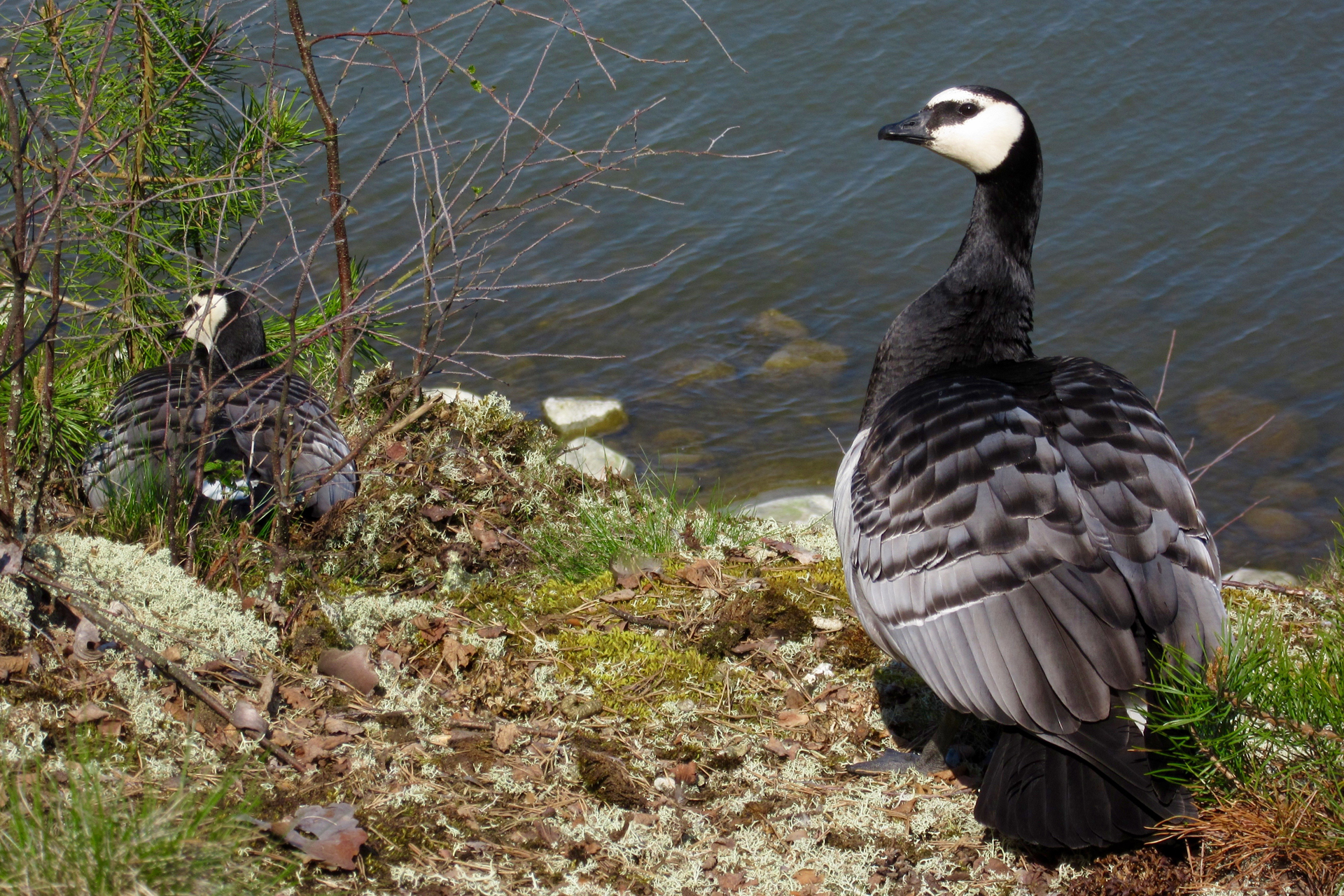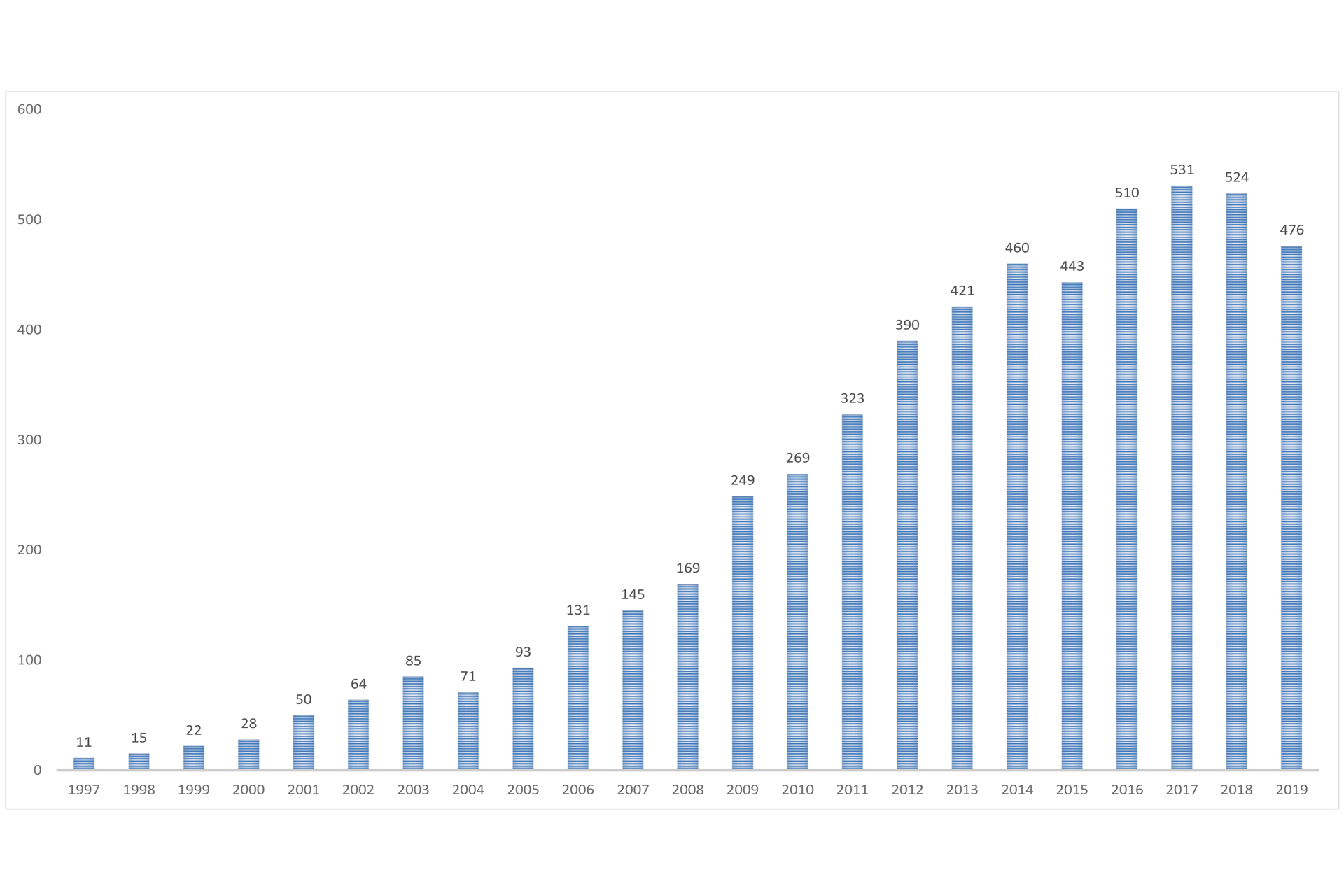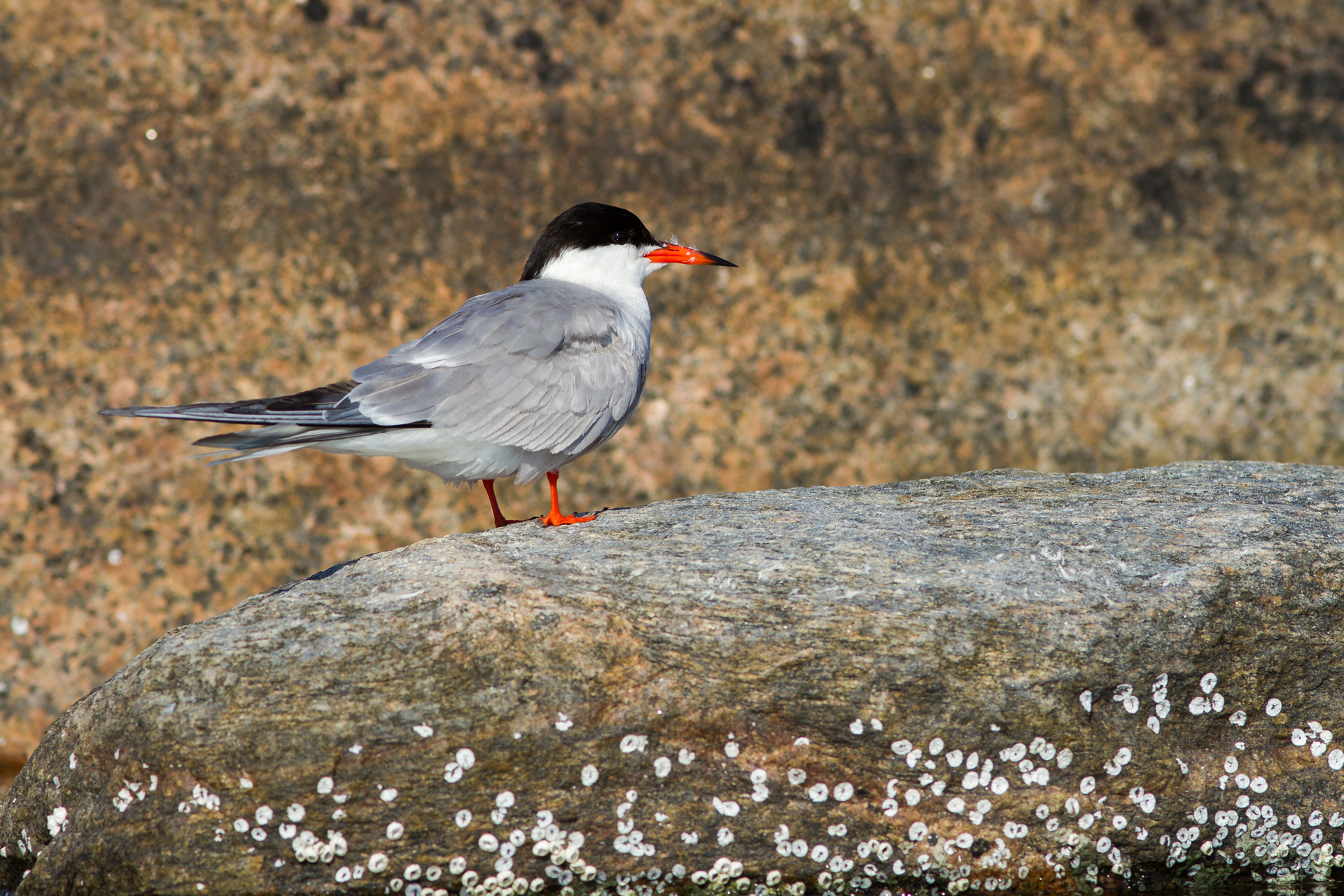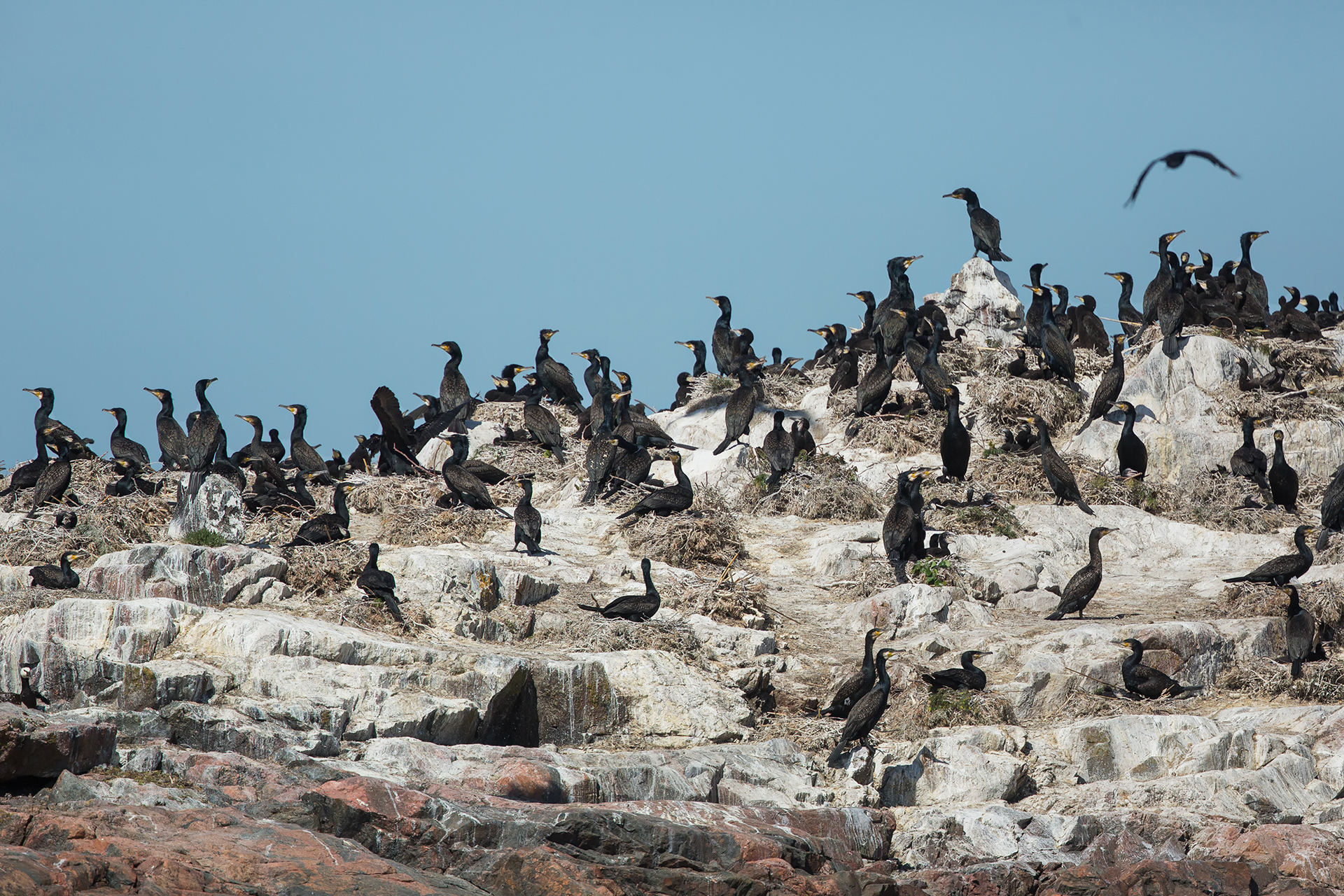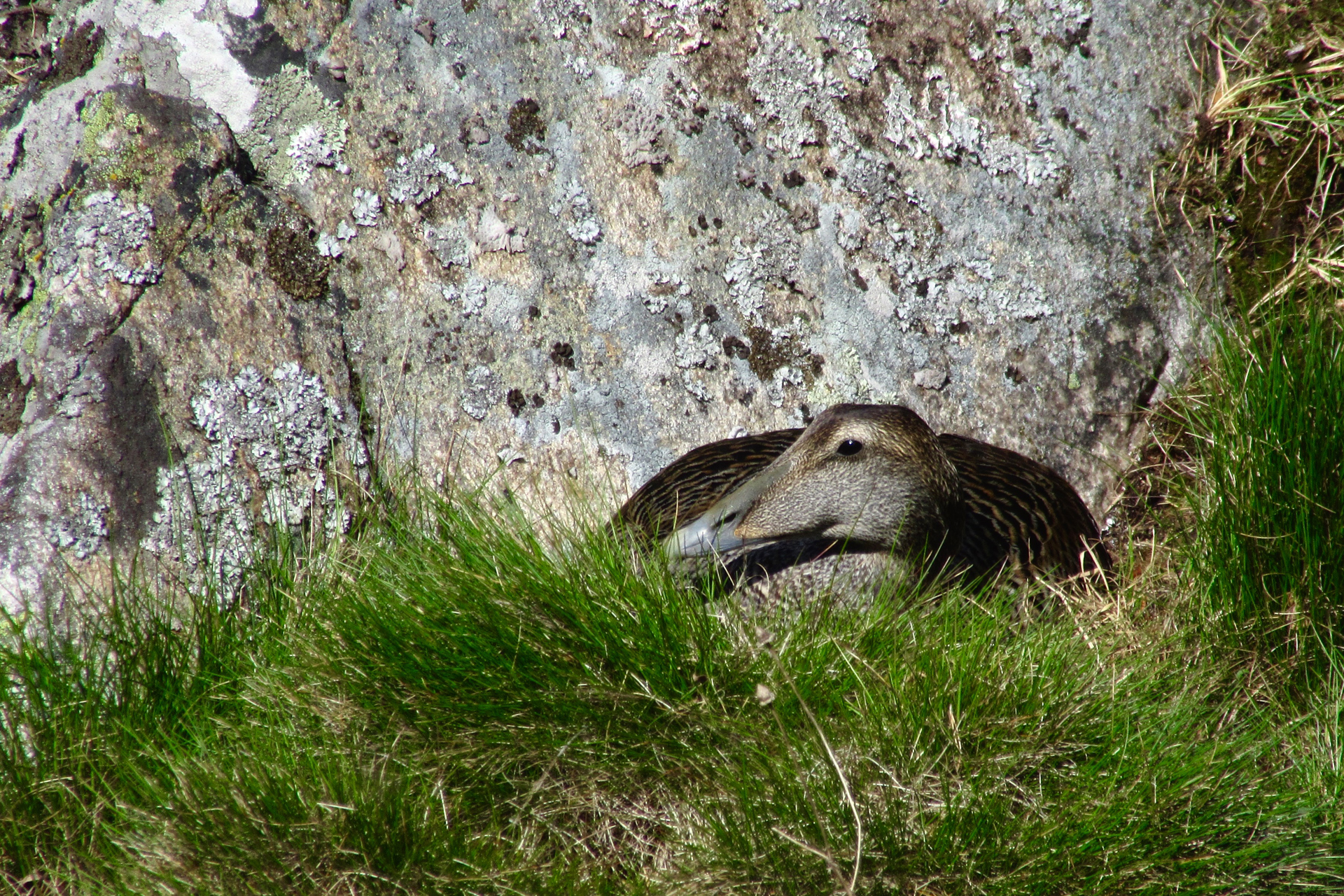The barnacle goose thrives on Ruissalo
The Arctic barnacle goose’s nesting history in the Baltic Sea area began in 1971 in Gotland, where large migration flocks regularly stop to rest. One of the earliest cases of the barnacle goose nesting in Finland was recorded in 1985 when a pair of geese nested on the islet of Kaletto off the coast of Ruissalo for the first time. One of these two birds is known to have been born at Skansen Zoo in Sweden. Finland’s barnacle goose population remained low, at 1–3 pairs, for ten years, but started growing around the turn of the millennium. Population growth in northern Airisto has been rapid, but seems to have plateaued for now. All of Ruissalo’s barnacle geese nest on the islets surrounding the main island. The most unusual nesting site is the islet of Kukkarokivi, where chicks have to drop down over ten metres to reach the sea.
Nowadays the first of the barnacle geese nesting in the Ruissalo area arrive as early as late March. In early spring, the geese gather in the manor fields to feed. As soon as the sea is free of ice, old birds seek out their familiar nesting islets. By the end of April, the entire nesting population will have arrived and the first nests already have eggs incubating in them. Arctic barnacle geese do not fly past Finland until mid-May, but since their migration route follows the Gulf of Finland, these birds are seldom seen on Ruissalo.
In the autumn, the geese nesting around Ruissalo start their migration at the same time as Arctic geese fly past Finland, around mid-October.
The barnacle goose is one of the species protected under the EC Habitats Directive, in addition to which it is protected under the Finnish Nature Conservation Act, as a result of which it is not hunted.
